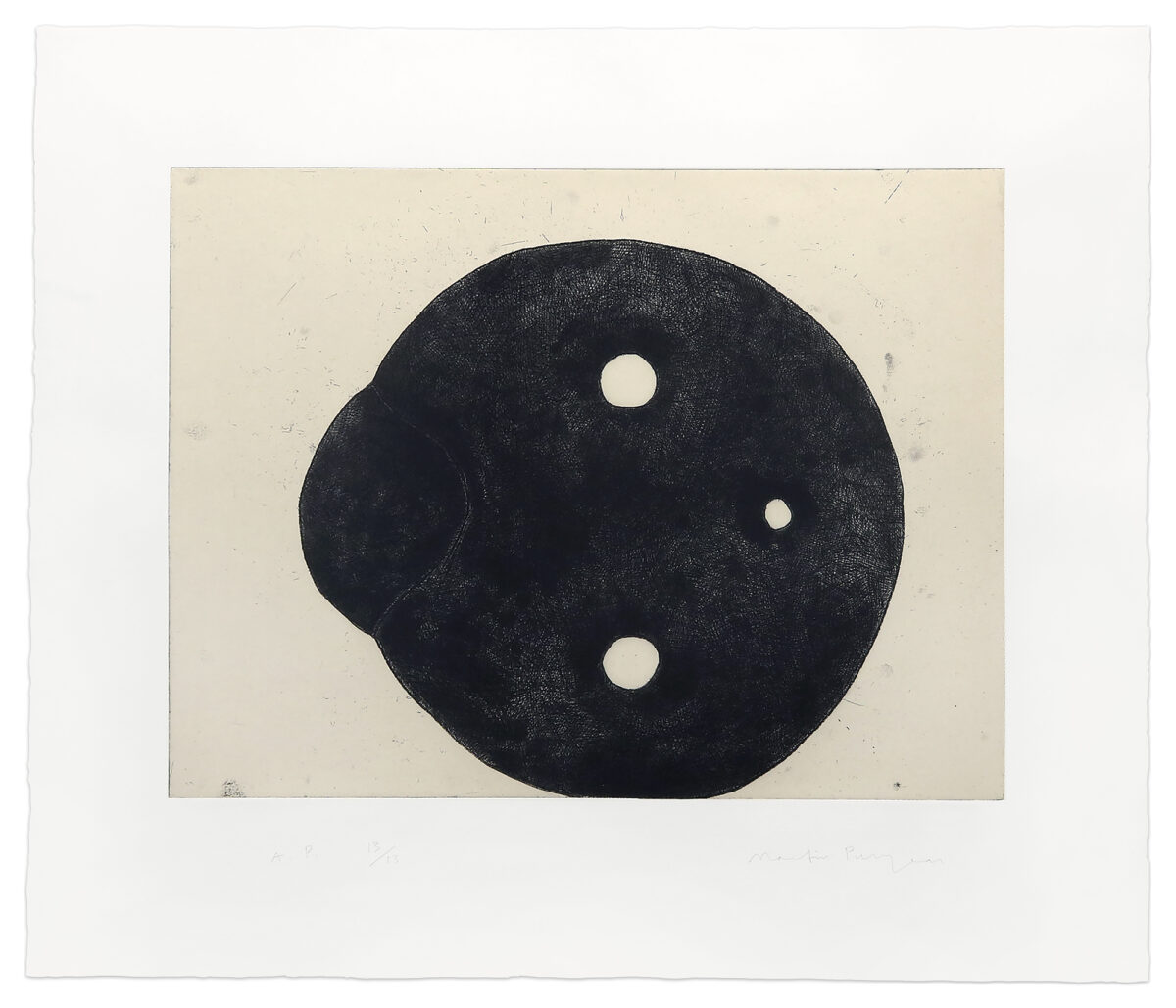
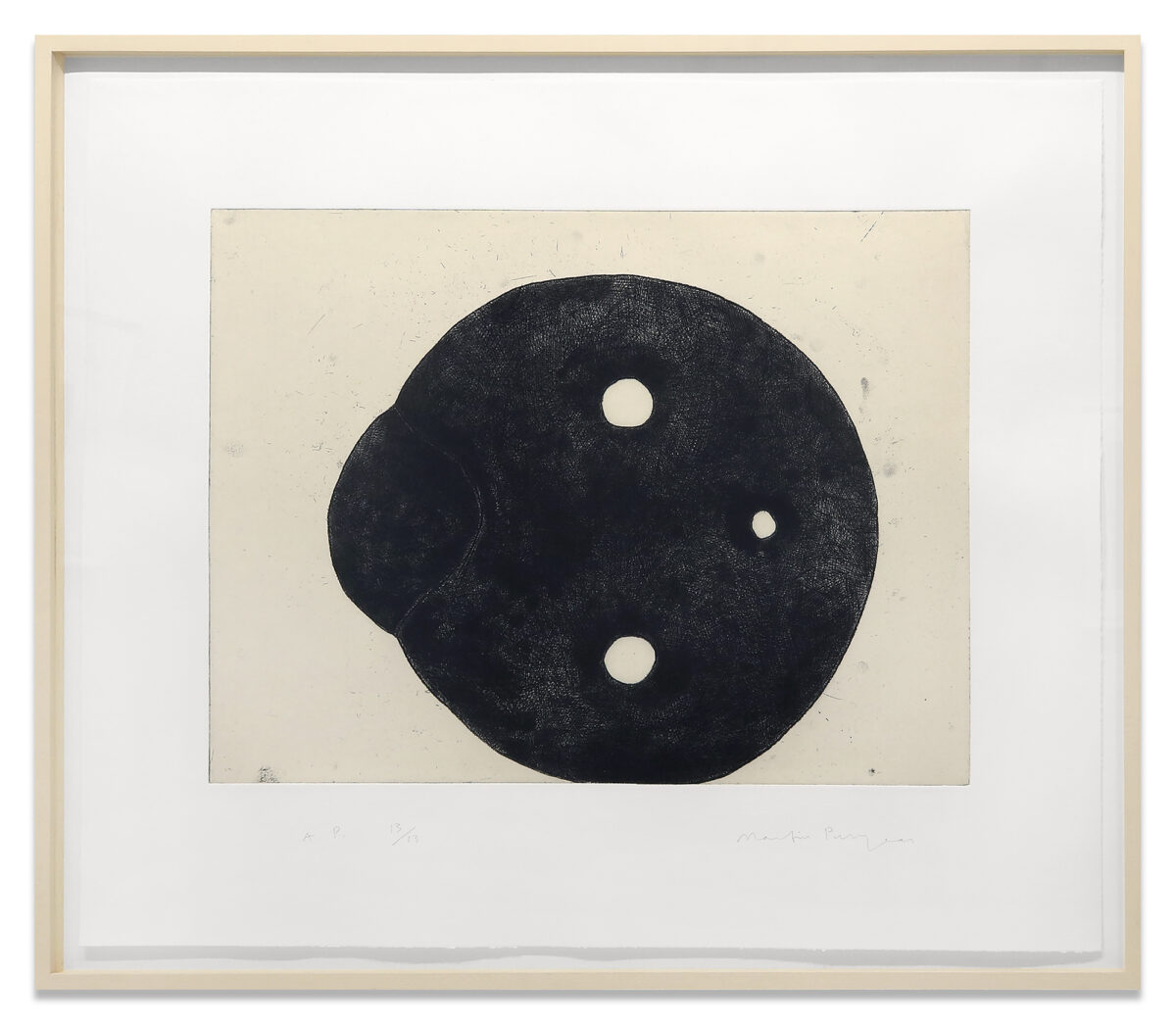
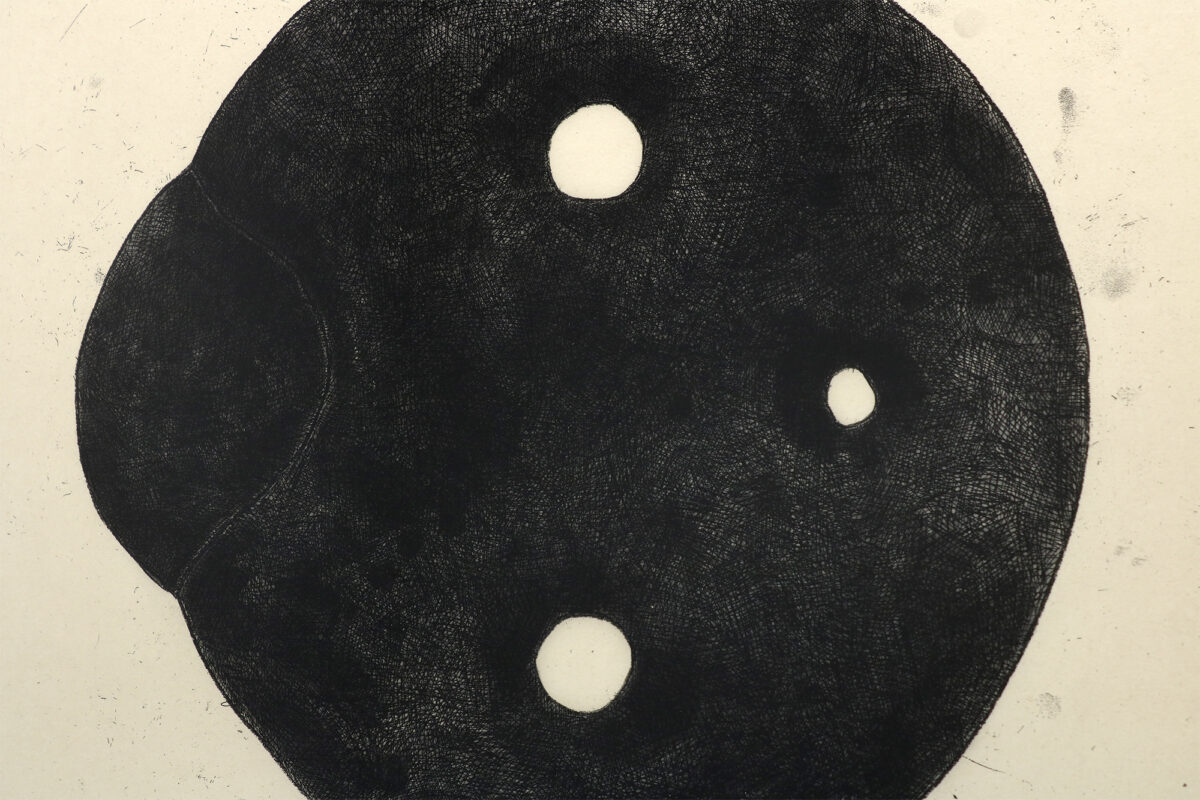
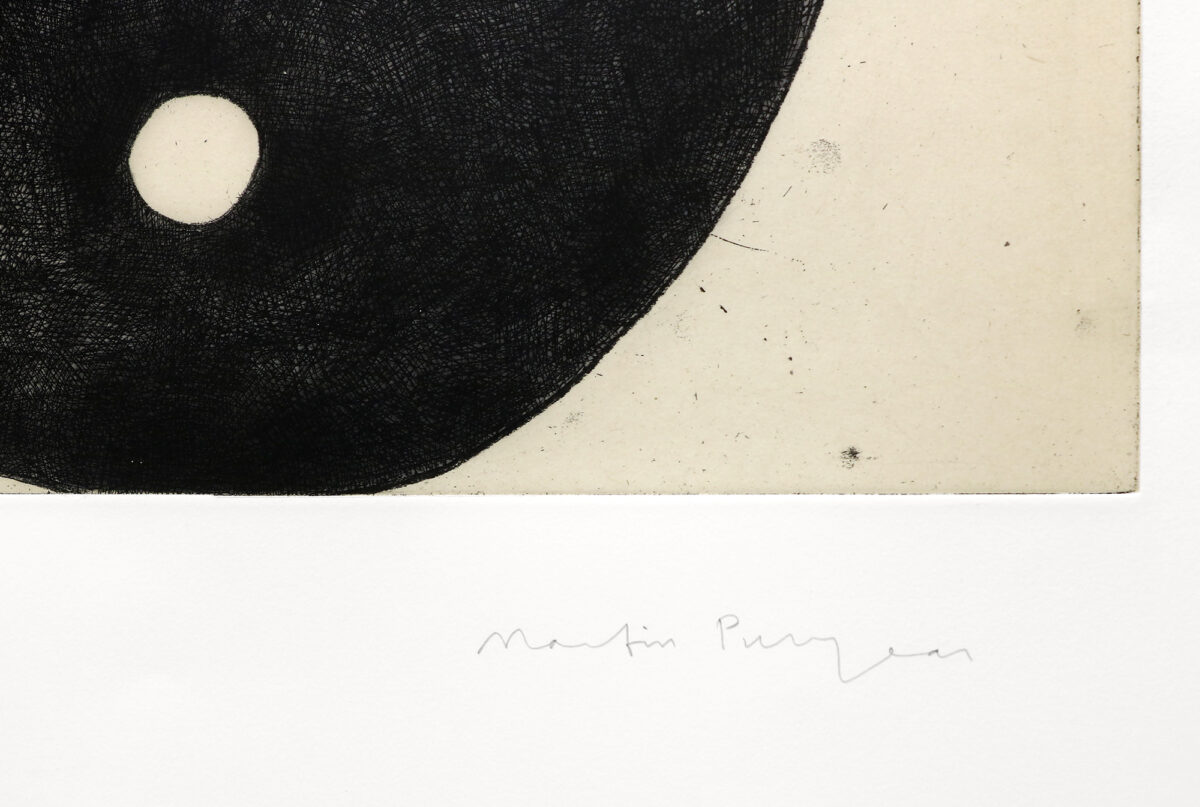
Image size: 17 3/4 x 23 3/4 inches (45.1 x 60.3 cm)
Paper size: 26 3/4 x 31 3/4 inches (67.9 x 80.6 cm)
Frame size: 29 1/4 x 34 1/4 inches (74.3 x 87 cm)
Edition of 40
Signed and numbered to lower margin
(Inventory #36359)
Image size: 17 3/4 x 23 3/4 inches (45.1 x 60.3 cm)
Paper size: 26 3/4 x 31 3/4 inches (67.9 x 80.6 cm)
Frame size: 29 1/4 x 34 1/4 inches (74.3 x 87 cm)
Edition of 40
Signed and numbered to lower margin
(Inventory #36359)
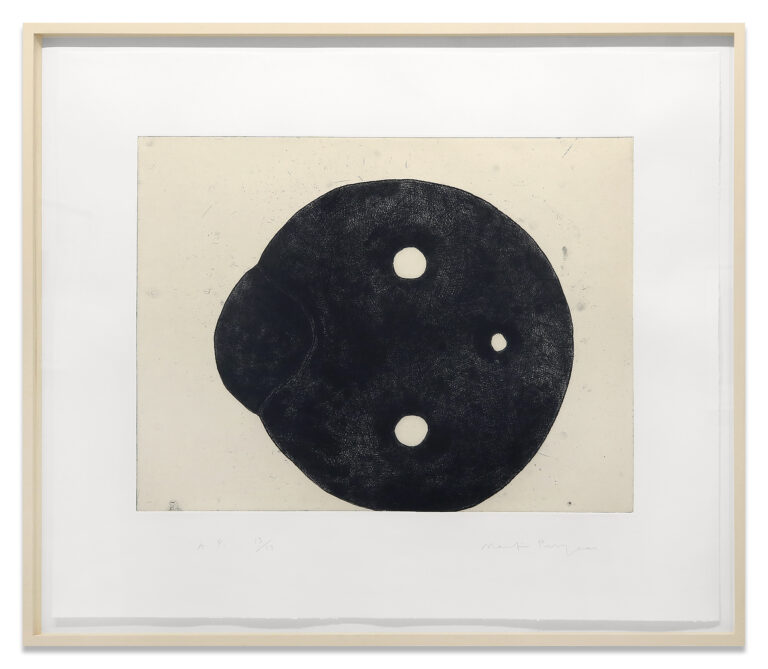
“I think there are a number of levels at which my work can be dealt with and appreciated. It gives me pleasure to feel there’s a level that doesn’t require knowledge of or immersion in the aesthetic of a given time or place.”
—Martin Puryear
Since the 1960’s, Martin Puryear has made abstract and organic-seeming works rich with cultural, historical, and psychological references that are celebrated for their elegance, refinement, and technical precision. As a student, Puryear studied archery, falconry, and ornithology. In the mid-1960s, he volunteered with the Peace Corps in Sierra Leone, where he educated himself in the region’s indigenous crafts. “[T]o be able to live in West Africa and experience a tribal culture firsthand was priceless,” Puryear has said. Living among woodworkers, weavers, and potters deepened his devotion to craft. This experience inspired the first etchings Puryear made when studying printmaking at the Royal Swedish Academy of Arts in Stockholm in the late 1960s. Since that time, the artist has continued to travel extensively, observing a range of cultures and their unique approaches to object making. In the past 25 years, he has created an extensive body of printmaking that is essential to his studio practice. While his forms evade specific identification, they evoke arches, baskets, the human head, and hats. These objects take on symbolic resonance as they reference concepts such as freedom and shelter. Returning periodically to the same subjects, Puryear has described his development as “linear in the sense that a spiral is linear. I come back to similar territory at different times” and has emphasized the importance of how artists “put these jogs and switchbacks in the historical continuum that people always want to believe in. There are always convoluted and complicated cul-de-sacs that don’t allow things to be read just as a linear evolution.”
“Contrary to so much artwork of the last 50 years, there’s no bombast—instead, there’s longing for a timeless grace. Though many of Puryear’s pieces are untitled and elusive, they retain meaning, quiet but hardly empty.”
—Dmitry Samarov
Martin Puryear (b. 1941) was born in Washington, DC. His first one-person exhibition was in 1968, and since then he has exhibited throughout the world, including public commissions in Europe, Asia, and the United States. His work was featured in Documenta 9, and in 1989, he represented the United States at the São Paulo Biennial, where he was awarded the festival’s Grand Prize. In 2007, the Museum of Modern Art in New York organized a survey of his work, which traveled to the National Gallery of Art in Washington, the San Francisco Museum of Modern Art, and the Modern Art Museum of Fort Worth. In 2015, the Art Institute of Chicago organized an exhibition of fifty years of his works on paper, which traveled to the Morgan Library and Museum in New York and the Smithsonian American Art Museum in Washington. Puryear received a MacArthur Foundation award in 1989 and a National Medal of Arts from President Obama in 2011. In 2019, he represented the United States at the 58th Venice Biennale.
10 Newbury Street, Boston, Massachusetts 02116
617-262-4490 | info@krakowwitkingallery.com
The gallery is free and open to the public Tuesday – Saturday, 10am – 5:30pm